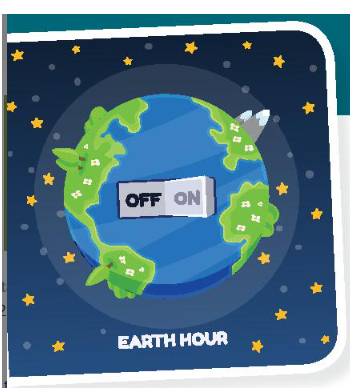Hãy nhập câu hỏi của bạn vào đây, nếu là tài khoản VIP, bạn sẽ được ưu tiên trả lời.

Mai: Ms Hoa, what is (1) mass / sustainable tourism?
Ms Hoa: Well, the aim of this kind of tourism is to (2) protect / damage the environment, respect local culture, and keep (3) benefits / profits local.
Mai: Can you give me an example?
Ms Hoa: When travelling, we should not (4) litter / impact on the street. We should also be (5) aware / responsible of the local traditions and respect them.
Mai: So is this kind of tourism similar to (6) ecotourism / mass tourism?
Ms Hoa: Well, it's a form of sustainable tourism because it has a positive (7) impact / craft on the environment.

Bài 1: Sửa lỗi sai.
1. The local people have jobs in the nature=>natural reserve as guides and wardens and also has a voice in how the project develops.
2. Tourists stay in local houses with local people, not in special =>specially built hotels.
3. Tourists experience the local culture and do not take precious energy and water away from the locally =>local population.
4. Tourists travel by =>on foot, by boat, bicycle or elephant so that there is no pollution.
5. Ecotourism brings tourists a specially =>especially experience that they will remember all of their lives.
6. This type of tourism can only involve small =>a small number of people so it can be experience=>experienced

Đoạn A nói về vấn đề nóng lên toàn cầu, đoạn B nói về nạn chặn cây phá rừng tự nhiên, đoạn C nói về ô nhiễm không khí, đoạn D nói về sự tuyệt chủng loài. Đây đều là các vấn đề về môi trường => chọn a.
Tạm dịch:
a. Các vấn đề về môi trường: Chúng là gì?
b. Bảo vệ môi trường: Nó quan trọng như thế nào?
c. Các giải pháp môi trường: Chúng thực tế như thế nào?
Môi trường chúng ta sống đang phải đối mặt với nhiều vấn đề nghiêm trọng. Chúng ta cần nhận thức rõ những vấn đề này để có thể tìm cách bảo vệ thiên nhiên.
A. Sự nóng lên toàn cầu là sự gia tăng nhiệt độ trung bình của khí quyển trái đất. Đó là một trong những vấn đề lớn nhất mà con người phải đối mặt ngày nay. Nó có thể gây ra những hậu quả nghiêm trọng như mực nước biển dâng cao, băng tan ở hai cực và các hiện tượng thời tiết khắc nghiệt như lũ lụt hoặc sóng nhiệt.
B. Một vấn đề môi trường khác là chặt phá rừng tự nhiên. Việc mất rừng có thể có tác động tiêu cực đến môi trường. Nó có thể làm hư hại môi trường sống tự nhiên của nhiều loài động vật và khiến động vật hoang dã gặp nguy hiểm. Nó cũng có thể phá hủy đất tự nhiên và dẫn đến biến đổi khí hậu.
C. Ô nhiễm không khí cũng là một vấn đề nghiêm trọng. Nguyên nhân chủ yếu là do khí thải từ xe cộ, máy móc hoặc nhà máy. Khi những khí độc hại này kết hợp với nước trong không khí, chúng sẽ tạo thành mưa hoặc tuyết, có thể gây hại cho mọi dạng sống. Ngoài ra, vấn đề này còn dẫn đến hiện tượng nóng lên toàn cầu và biến đổi khí hậu. Nó cũng là nguyên nhân chính gây ra các bệnh về đường hô hấp hay thậm chí là ung thư phổi.
D. Trên khắp thế giới, số lượng các loài động vật có nguy cơ tuyệt chủng đang tăng lên. Nhiều con trong số chúng biến mất vì ô nhiễm và biến đổi khí hậu. Ngoài ra, còn vì con người săn bắt và giết động vật một cách bất hợp pháp và đánh bắt quá nhiều cá cùng một lúc. Điều này đang làm đảo lộn sự cân bằng tự nhiên của các hệ sinh thái, có thể gây hại cho tất cả các sinh vật sống và không sống.

Help me
PAPER RECYCLING
A Paper is different from other waste produce because it comes from a sustainable resource: trees. Unlike the minerals and oil used to make plastics and metals, trees are replaceable. Paper is also biodegradable, so it does not pose as much threat to the environment when it is discarded. While 45 out of every 100 tonnes of wood fibre used to make paper in Australia comes from waste paper, the rest comes directly from virgin fibre from forests and plantations. By world standards, this is a good performance since the worldwide average is 33 percent waste paper. Governments have encouraged waste paper collection and sorting schemes and at the same time, the paper industry has responded by developing new recycling technologies that have paved the way for even greater utilization of used fibre. As a result, industry’s use of recycled fibres is expected to increase at twice the rate of virgin fibre over the coming years.
B Already, waste paper constitutes 70% of paper used for packaging and advances in the technology required to remove ink from the paper have allowed a higher recycled content in newsprint and writing paper. To achieve the benefits of recycling, the community must also contribute. We need to accept a change in the quality of paper products; for example, stationery may be less white and of a rougher texture. There also needs to support from the community for waste paper collection programs. Not only do we need to make the paper available to collectors but it also needs to be separated into different types and sorted from contaminants such as staples, paperclips, string and other miscellaneous items.
C There are technical limitations to the amount of paper which can be recycled and some paper products cannot be collected for re-use. These include paper in the form of books and permanent records, photographic paper and paper which is badly contaminated. The four most common sources of paper for recycling are factories and retail stores which gather large amounts of packaging material in which goods are delivered, also offices which have unwanted business documents and computer output, paper converters and printers and lastly households which discard newspapers and packaging material. The paper manufacturer pays a price for the paper and may also incur the collection cost.
D Once collected, the paper has to be sorted by hand by people trained to recognise various types of paper. This is necessary because some types of paper can only be made from particular kinds of recycled fibre. The sorted paper then has to be repulped or mixed with water and broken down into its individual fibres. This mixture is called stock and may contain a wide variety of contaminating materials, particularly if it is made from mixed waste paper which has had little sorting. Various machineries are used to remove other materials from the stock. After passing through the repulping process, the fibres from printed waste paper are grey in colour because the printing ink has soaked into the individual fibres. This recycled material can only be used in products where the grey colour does not matter, such as cardboard boxes but if the grey colour is not acceptable, the fibres must be de-inked. This involves adding chemicals such as caustic soda or other alkalis, soaps and detergents, water-hardening agents such as calcium chloride, frothing agents and bleaching agents. Before the recycled fibres can be made into paper they must be refined or treated in such a way that they bond together.
E Most paper products must contain some virgin fibre as well as recycled fibres and unlike glass, paper cannot be recycled indefinitely. Most paper is down-cycled which means that a product made from recycled paper is of an inferior quality to the original paper. Recycling paper is beneficial in that it saves some of the energy, labour and capital that go into producing virgin pulp. However, recycling requires the use of fossil fuel, a non-renewable energy source, to collect the waste paper from the community and to process it to produce new paper. And the recycling process still creates emissions which require treatment before they can be disposed of safely. Nevertheless, paper recycling is an important economical and environmental practice but one which must be carried out in a rational and viable manner for it to be useful to both industry and the community.
i. Process of paper recycling
ii. Less threat of waste paper to the environment
iii. Collection of paper for recycling
iv. Sources of paper for recycling
v. Bad sides of paper recycling
vi. Contribution of community to recycling paper
Your answer:
1. Paragraph A ...........iii. Collection of paper for recycling............
2. Paragraph B ..........vi. Contribution of community to recycling paper.............
3. Paragraph C ...........iv. Sources of paper for recycling............
4. Paragraph D ............i. Process of paper recycling...........
5. Paragraph E ...........v. Bad sides of paper recycling............

1. educating-> educate
2. tried-> are trying
3. benefits -> benefit
4. that-> which
5. an -> the/ bỏ
6.to visiting-> to visit


Tác động đến môi trường của du lịch
Mặc dù du lịch thường được gọi là 'ngành công nghiệp không khói', hoặc một ngành công nghiệp thân thiện với môi trường, nó thực sự có thể gây hại cho thiên nhiên. Tuy nhiên, các loại hình du lịch khác nhau có thể có những tác động khác nhau đến môi trường.
• Du lịch đại chúng là loại hình du lịch bao gồm hàng chục nghìn người tập trung ở cùng một địa điểm vào cùng một thời điểm trong năm. Nó thường có nhiều tác động tiêu cực đến khu vực địa phương, chẳng hạn như xả rác từ khách du lịch và ô nhiễm giao thông.
• Du lịch sinh thái cung cấp cho khách du lịch cơ hội khám phá thiên nhiên, đồng thời giúp bảo vệ môi trường và giáo dục du khách về các vấn đề môi trường tại địa phương. Nó cũng thúc đẩy sự tôn trọng của khách du lịch đối với cộng đồng địa phương.
• Du lịch bền vững không chỉ liên quan đến việc bảo vệ môi trường và tôn trọng văn hóa mà còn phải nỗ lực giữ lợi nhuận cho địa phương. Nó thường đề cập đến các hành động của ngành du lịch nói chung.
• Du lịch có trách nhiệm khuyến khích khách du lịch nhiều hơn là khách vãng lai. Khách du lịch có trách nhiệm không chỉ nhận thức được vai trò của mình mà còn phải tham gia vào việc bảo vệ môi trường, văn hóa và nâng cao lợi nhuận cho người dân địa phương. Du lịch có trách nhiệm thường liên quan đến các hành động cụ thể của cá nhân, doanh nghiệp và cộng đồng.